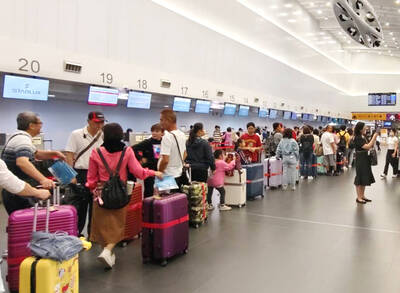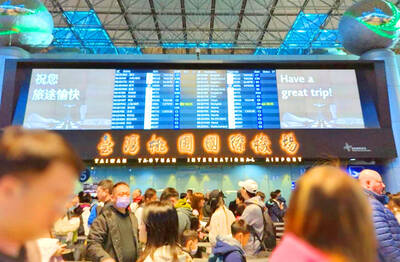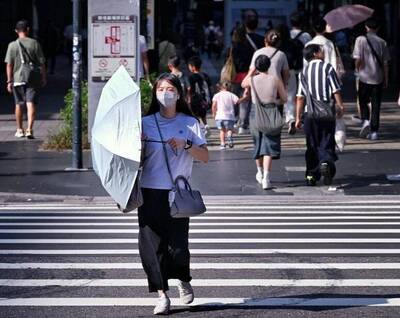Labor rights activists and business leaders with experience working in China agree that signing a trade agreement between Taiwan and China would speed up capital outflow from the nation, but their opinions differ on solving Taiwan’s unemployment problem.
A proposed economic cooperation framework agreement (ECFA) with China “would speed up outflow of domestic capital and the exodus of businesses and it will not solve the unemployment problem,” Victims of Investment in China Association (VICA) president William Kao (高為邦) said.
The core problem of the nation’s shrinking economy is that Taiwanese businesses have lost their competitive edge on the global stage and that will not be solved by signing an ECFA, Kao argued, saying that Taiwanese business leaders had no choice but to move to China or other countries with cheaper labor.
Moreover, Kao said, China is not trustworthy and many Taiwanese have been stripped of their property and assets in China by the Chinese government, which has used “every method imaginable.”
Kao himself is an example.
A group of unidentified men looted his Chinese factory in 1999. After asking the Chinese government for help to no avail for two years, he left China in 2001.
The government claims signing an ECFA will create 260,000 jobs, although the opposition says there could be as many as 890,000 jobs lost after it is signed, he said.
“The real answer is probably something in between,” Kao said.
With 600,000 people out of work, unemployment is the most serious issue in the nation, he said. Unless the government removes the minimum wage requirement for foreign workers, there will not be a solution to the unemployment problem, Kao said.
“A problematic foreign labor policy enacted in 1992 is the root cause of all these problems,” he said.
If the minimum wage of foreign workers was lowered and businesses were allowed to hire as many as 60 percent foreign workers, companies would be willing to move back to Taiwan, given China’s inconsistent policies, investment environment and worsening social order, Kao said.
“That would create more jobs for local workers,” he said.
“I agree that the ECFA will not solve the unemployment problem, but I find it hard to agree with Kao’s theory,” Taiwan Labor Front secretary-general Sun Yu-lien (孫友聯) said.
An ECFA is basically a free-trade agreement that would only benefit specific sectors or companies, while most small and medium-sized businesses would suffer, Sun said.
“The only thing left in Taiwan would be lower-level service sector companies operating solely for domestic demand, just like what happened in Hong Kong after it signed its Closer Economic Partnership Arrangement [CEPA] with China,” he said.
Sun said Kao’s theory has been brought up by legislators previously, but it had not been implemented by the previous administration or the KMT government.
“It’s obviously not in line with mainstream opinion,” he said.
Sun expressed opposition to the theory because it does not respect labor rights, a universal value, and is against Taiwan’s labor policy that regards foreign labor as a “supplementary” workforce.
“If we agree with the principle of ‘equal pay for equal work’ ... if we agree that men and women should receive the same pay for the same work, then why should foreign workers be different?” Sun asked.
If the minimum wage for foreign workers was lower than that for domestic workers, Sun said it would lead to lower overall payment levels eventually because employers would rather hire cheaper foreign workers than domestic workers.

Three Taiwanese airlines have prohibited passengers from packing Bluetooth earbuds and their charger cases in checked luggage. EVA Air and Uni Air said that Bluetooth earbuds and charger cases are categorized as portable electronic devices, which should be switched off if they are placed in checked luggage based on international aviation safety regulations. They must not be in standby or sleep mode. However, as charging would continue when earbuds are placed in the charger cases, which would contravene international aviation regulations, their cases must be carried as hand luggage, they said. Tigerair Taiwan said that earbud charger cases are equipped

Foreign travelers entering Taiwan on a short layover via Taiwan Taoyuan International Airport are receiving NT$600 gift vouchers from yesterday, the Tourism Administration said, adding that it hopes the incentive would boost tourism consumption at the airport. The program, which allows travelers holding non-Taiwan passports who enter the country during a layover of up to 24 hours to claim a voucher, aims to promote attractions at the airport, the agency said in a statement on Friday. To participate, travelers must sign up on the campaign Web site, the agency said. They can then present their passport and boarding pass for their connecting international

Temperatures in northern Taiwan are forecast to reach as high as 30°C today, as an ongoing northeasterly seasonal wind system weakens, the Central Weather Administration (CWA) said. CWA forecaster Tseng Chao-cheng (曾昭誠) said yesterday that with the seasonal wind system weakening, warmer easterly winds would boost the temperature today. Daytime temperatures in northern Taiwan and Yilan County are expected to range from 28°C to 30°C today, up about 3°C from yesterday, Tseng said. According to the CWA, temperature highs in central and southern Taiwan could stay stable. However, the weather is expected to turn cooler starting tonight as the northeasterly wind system strengthens again

Taiwan sweltered through its hottest October on record, the Central Weather Administration (CWA) said yesterday, the latest in a string of global temperature records. The main island endured its highest average temperature since 1950, CWA forecaster Liu Pei-teng said. Temperatures the world over have soared in recent years as human-induced climate change contributes to ever more erratic weather patterns. Taiwan’s average temperature was 27.381°C as of Thursday, Liu said. Liu said the average could slip 0.1°C by the end of yesterday, but it would still be higher than the previous record of 27.009°C in 2016. "The temperature only started lowering around Oct. 18 or 19